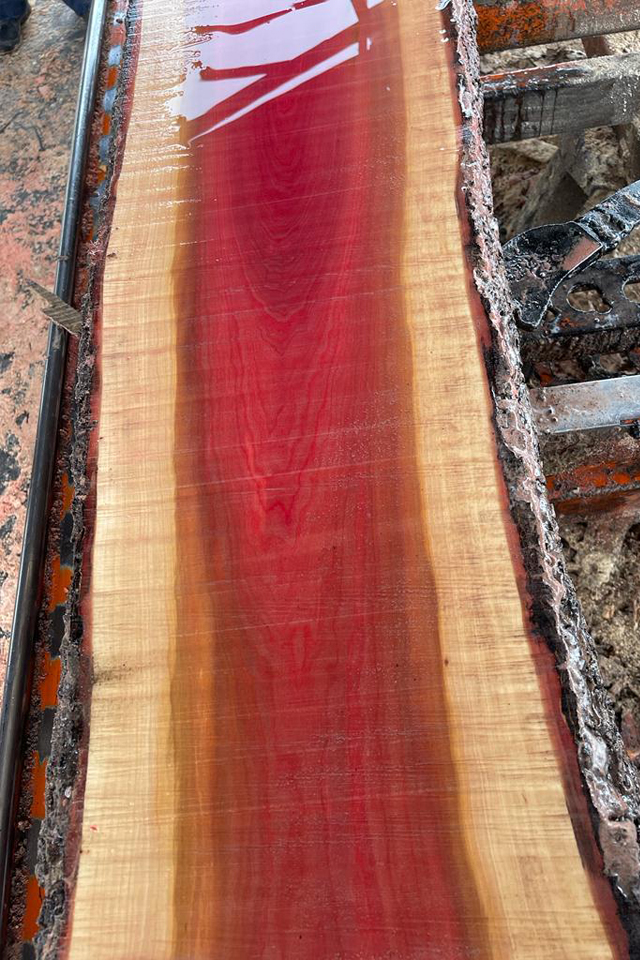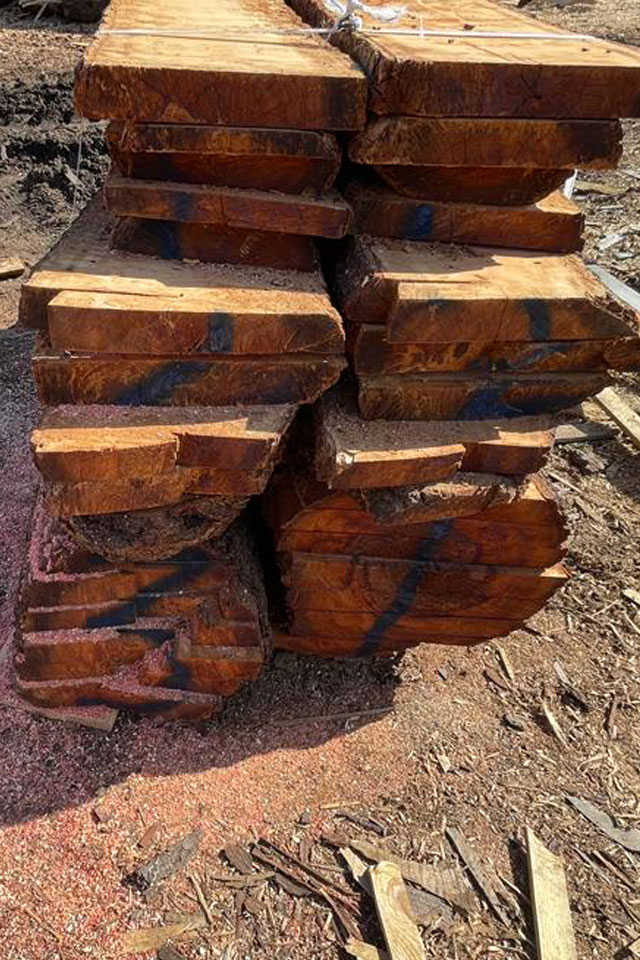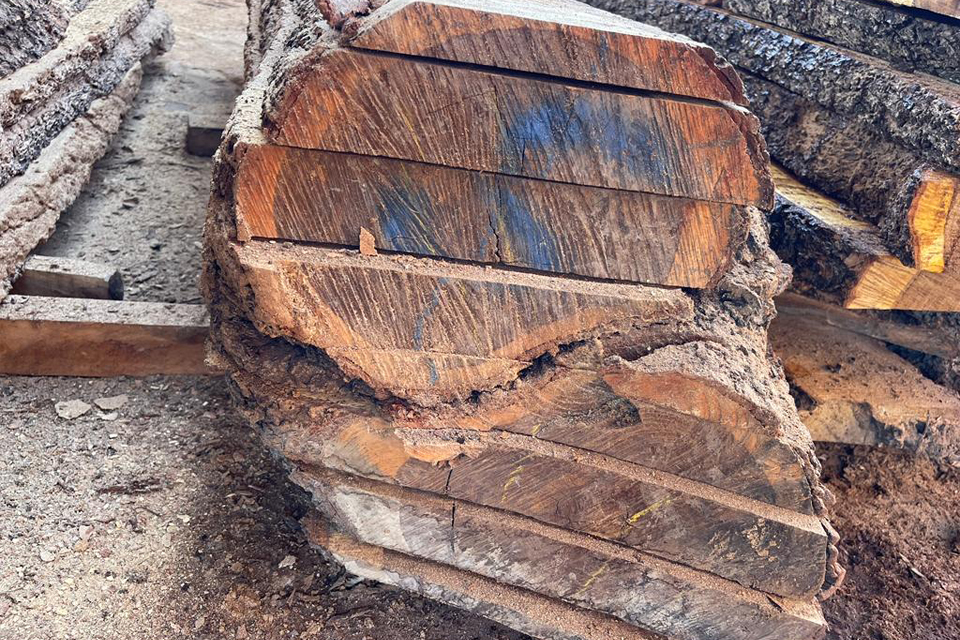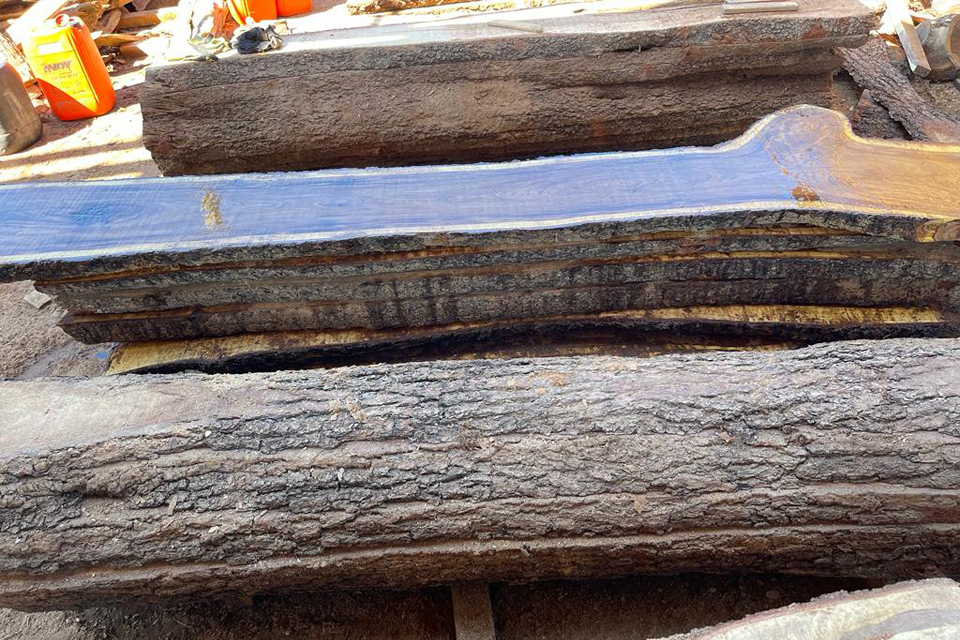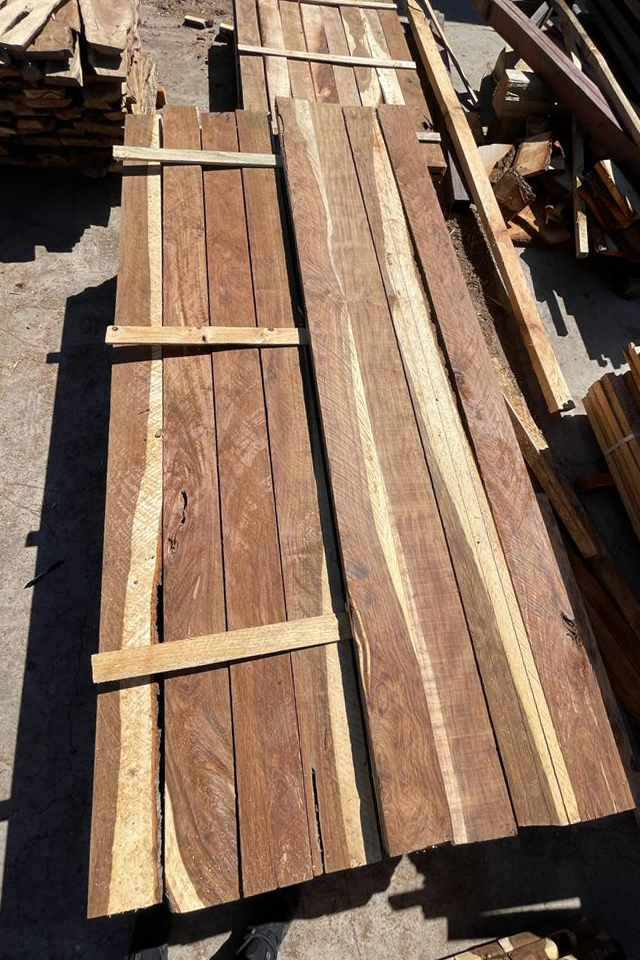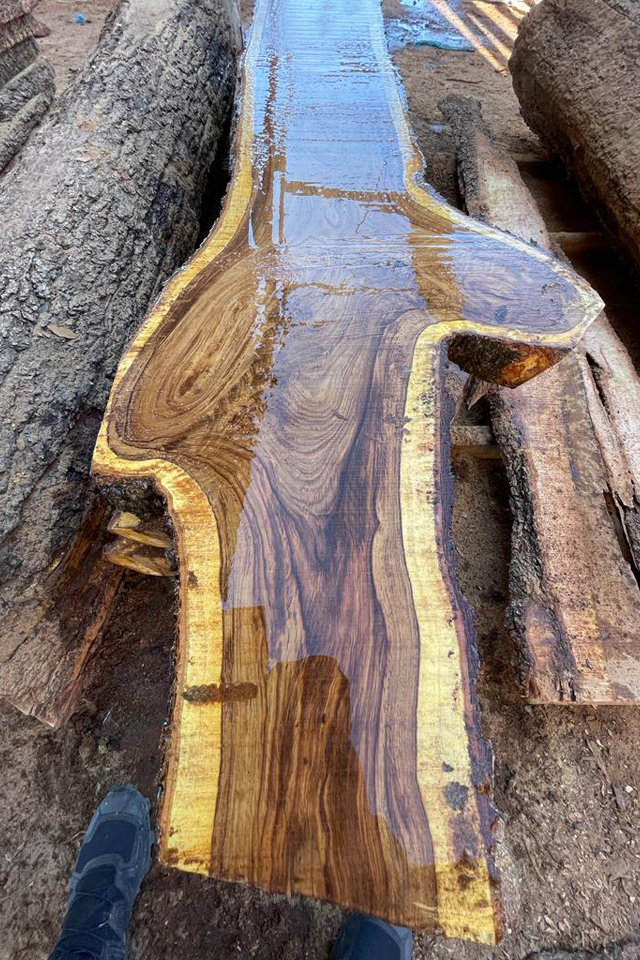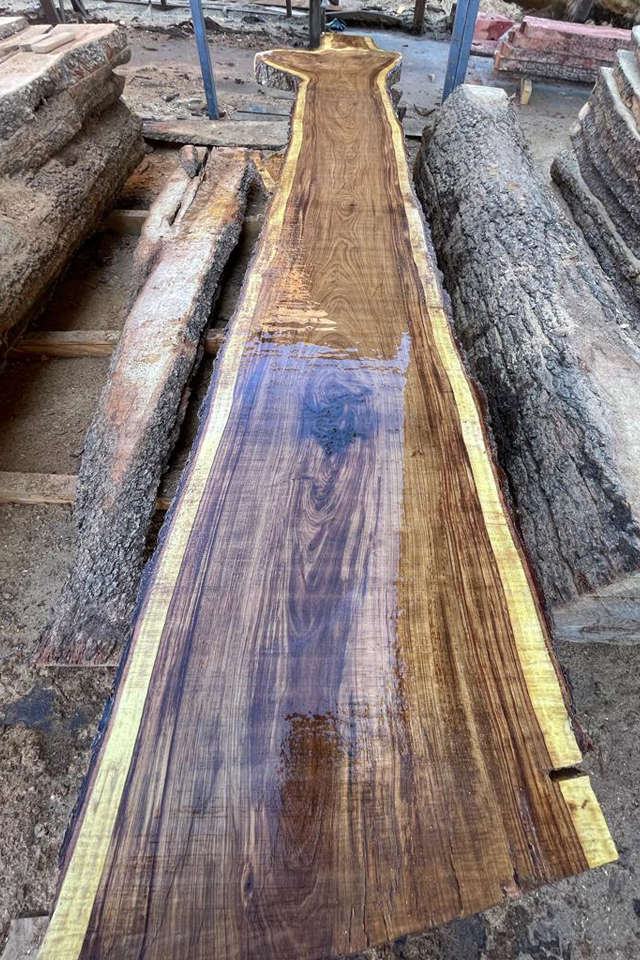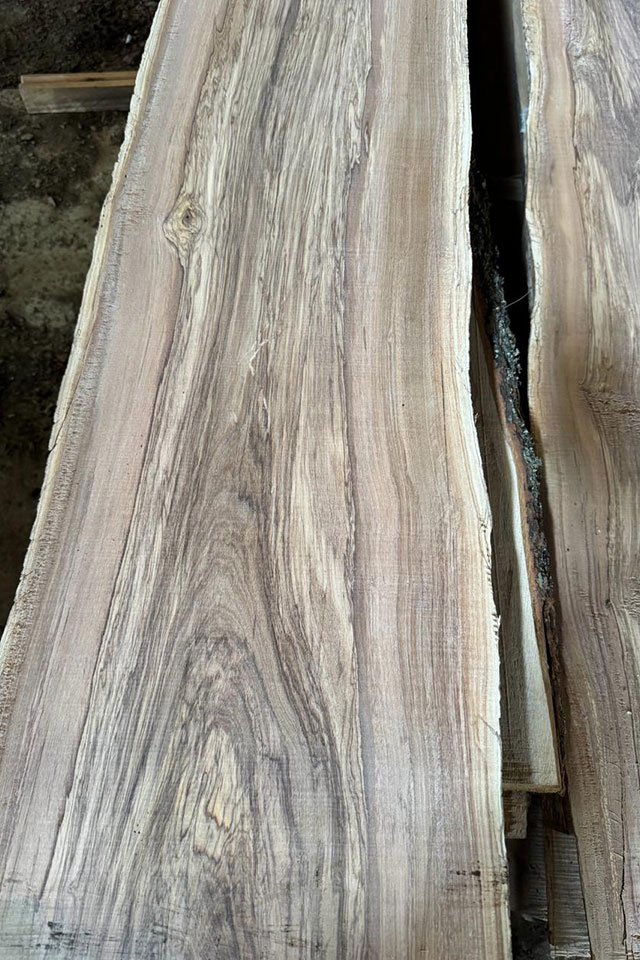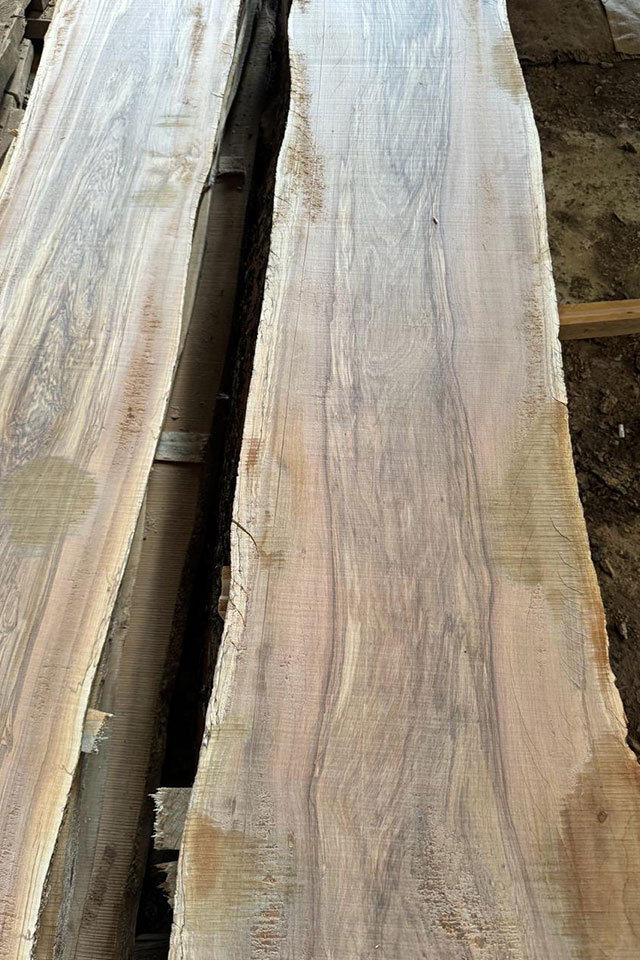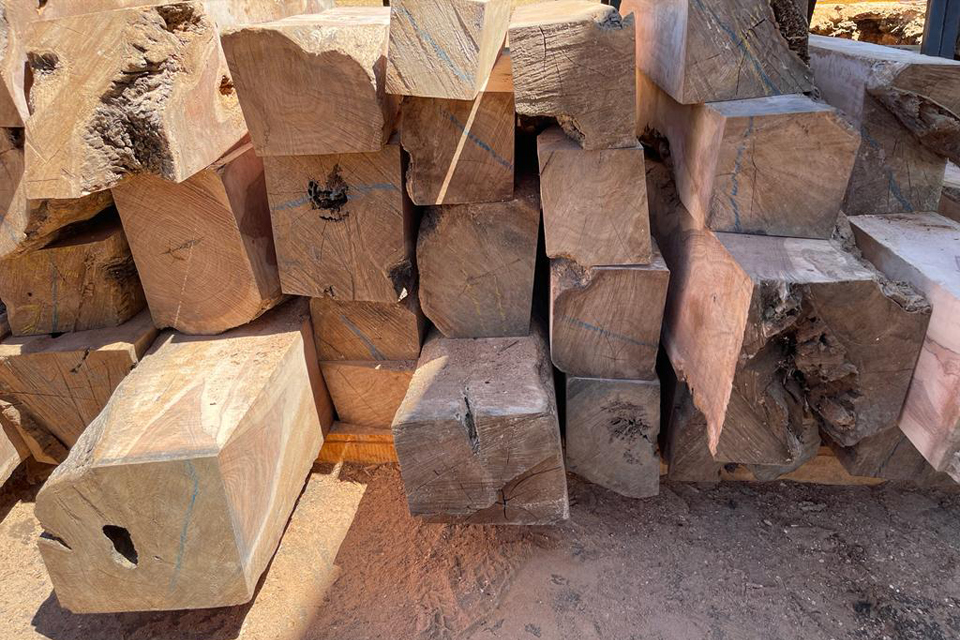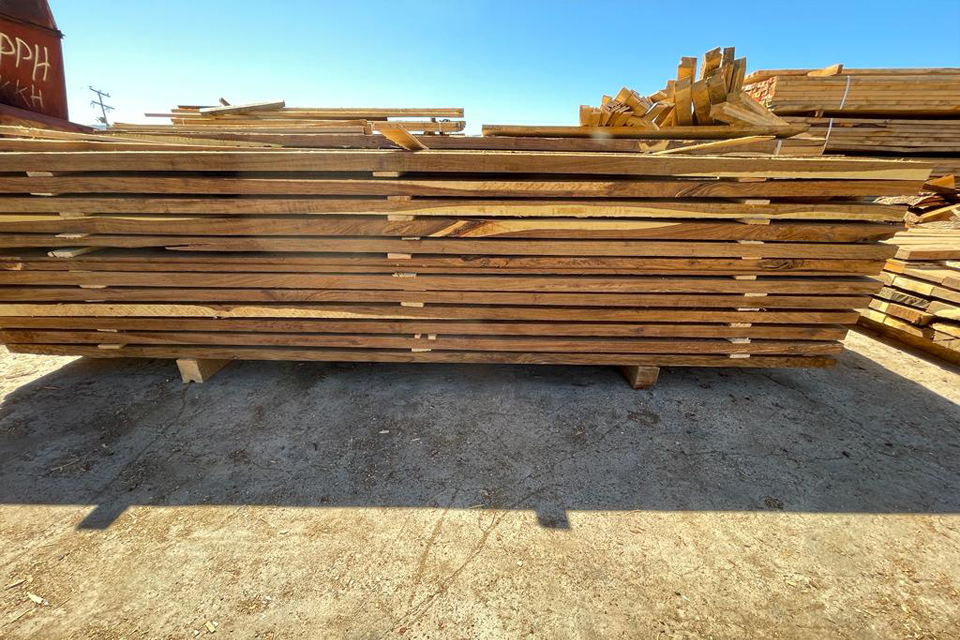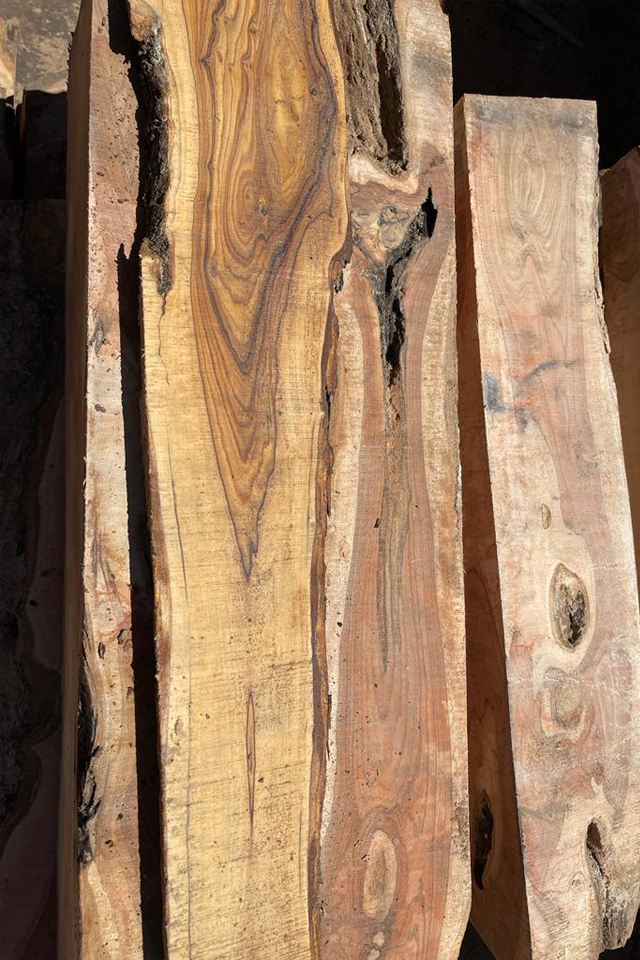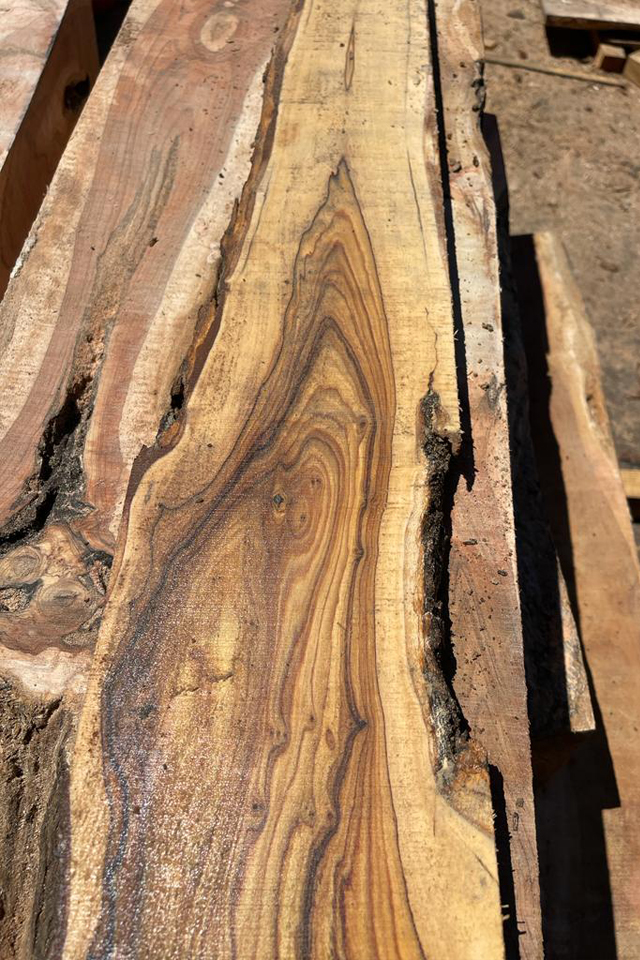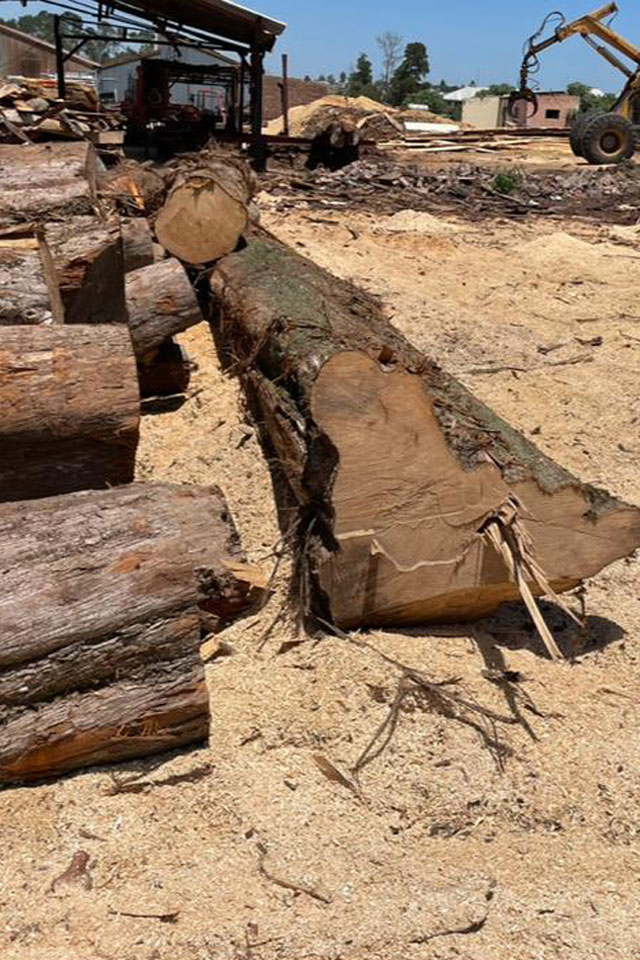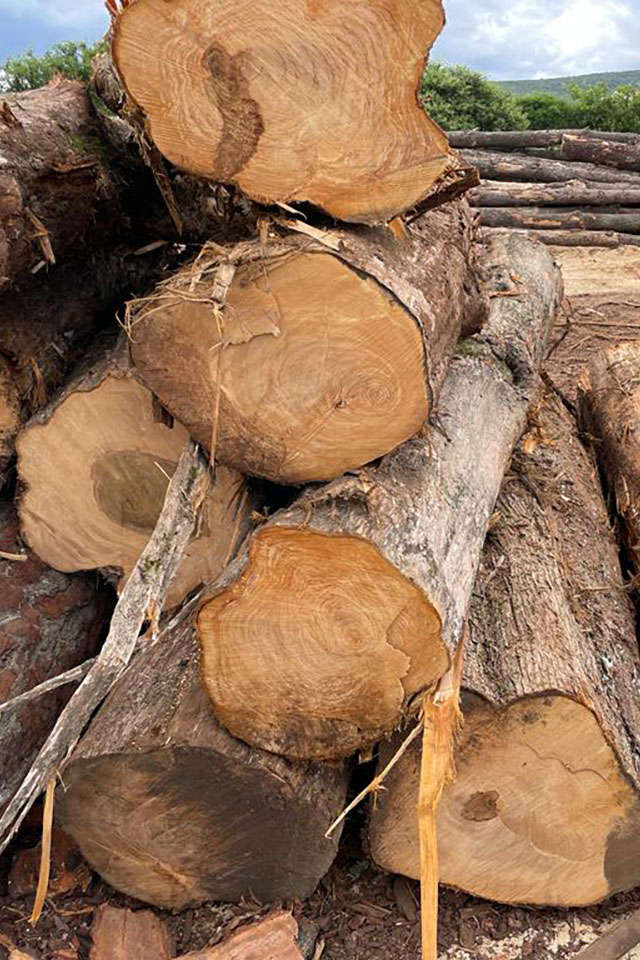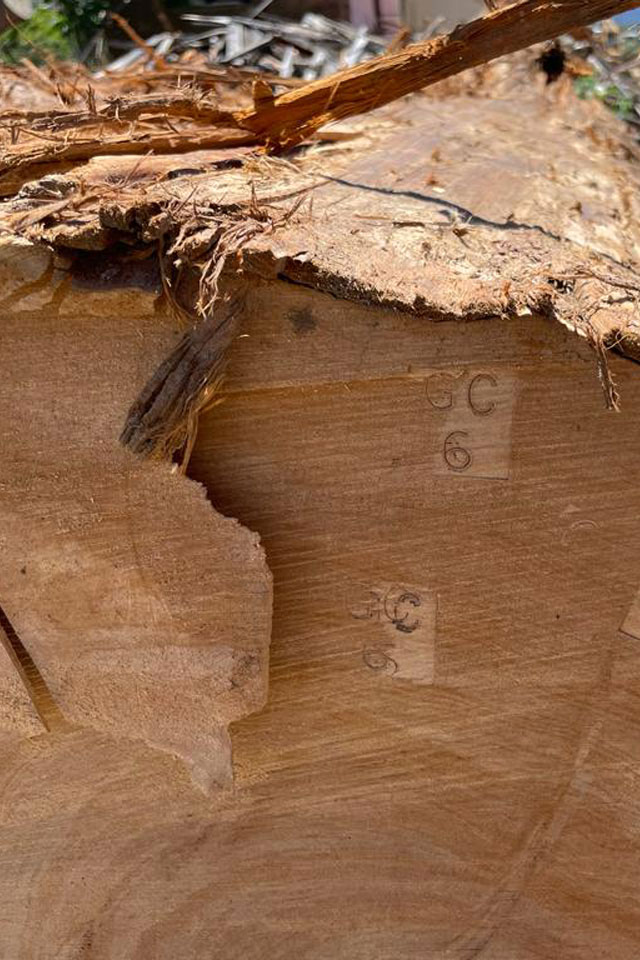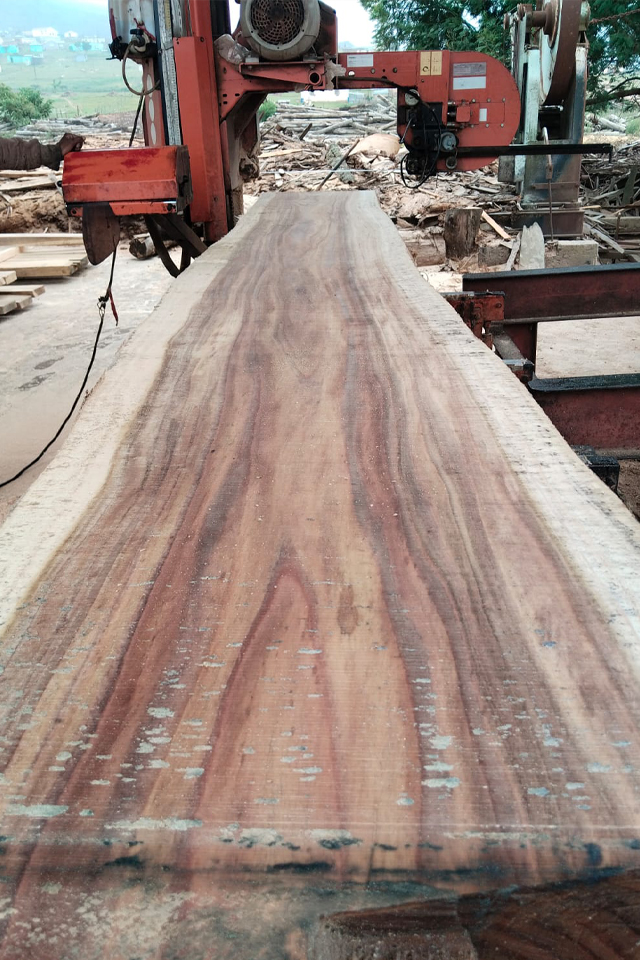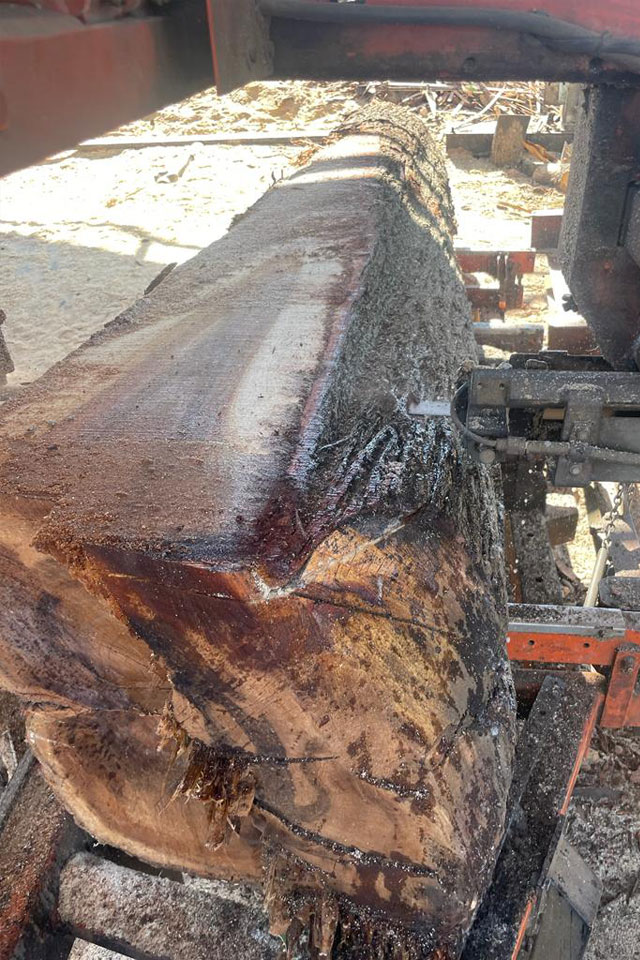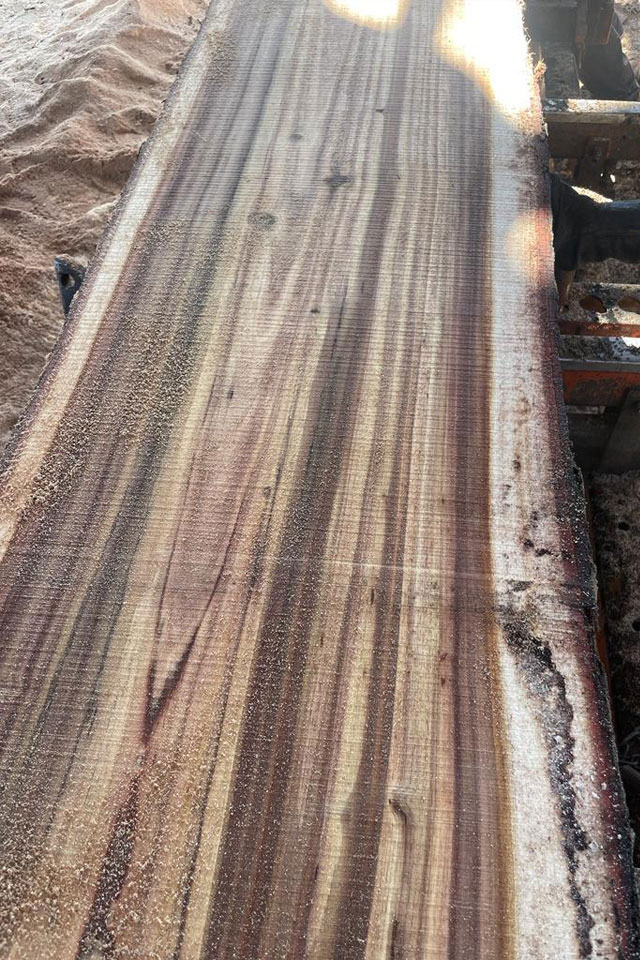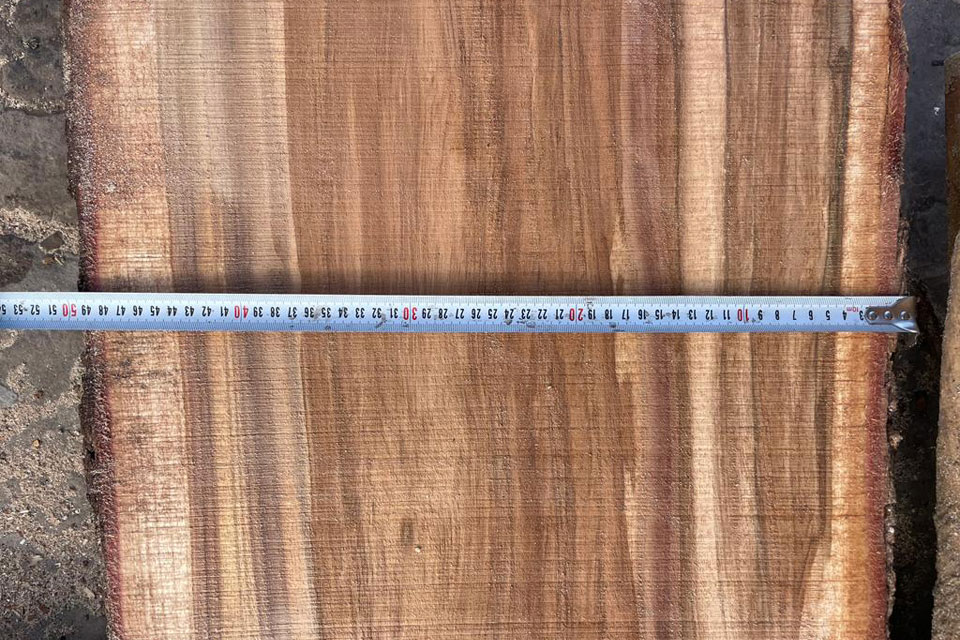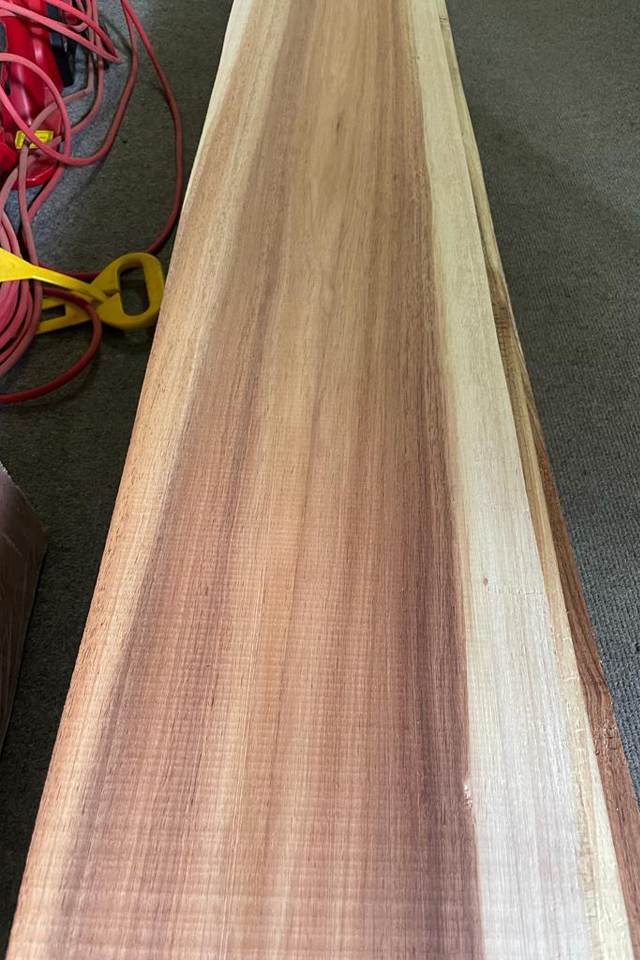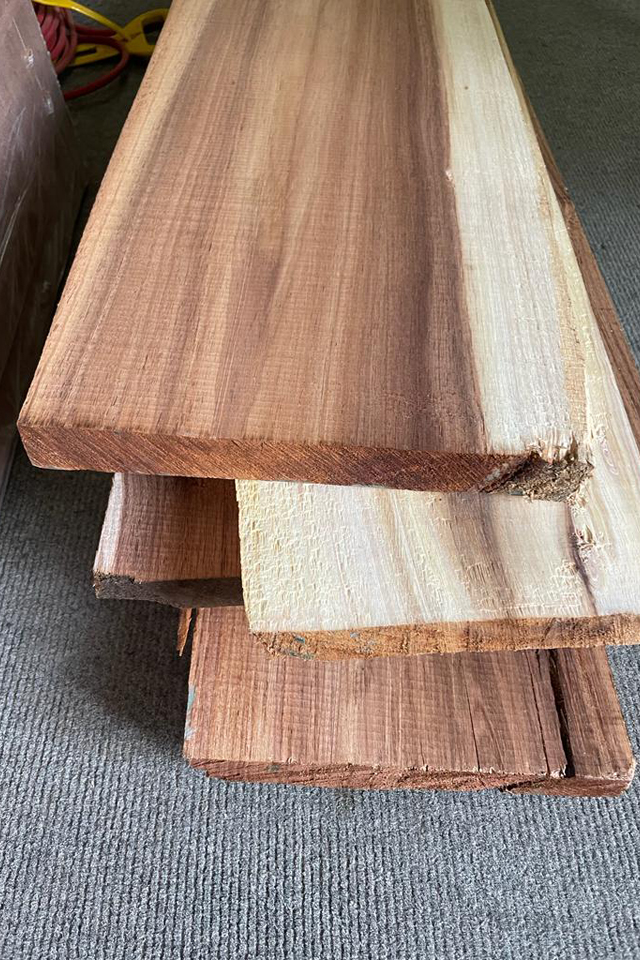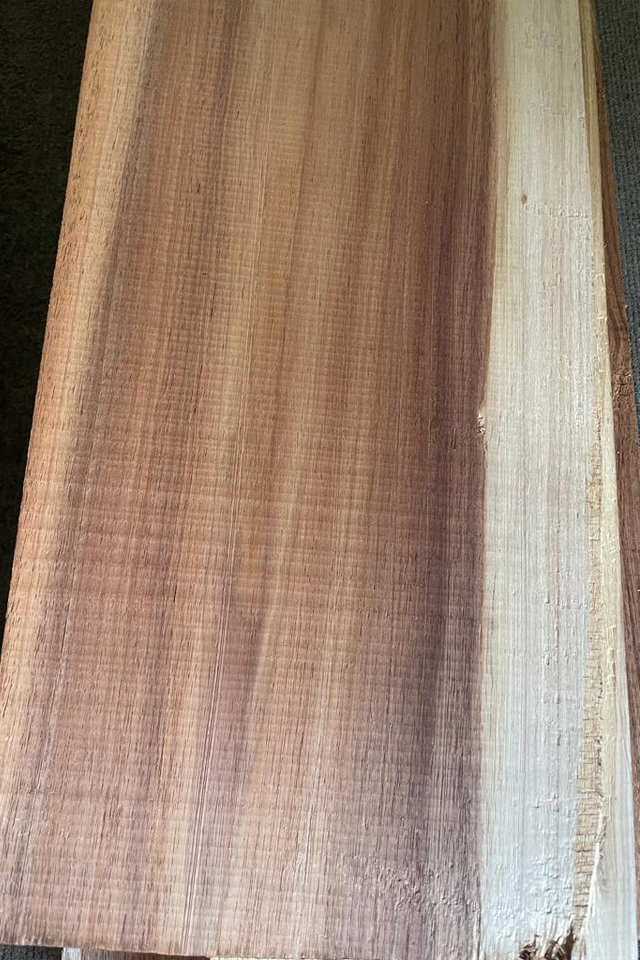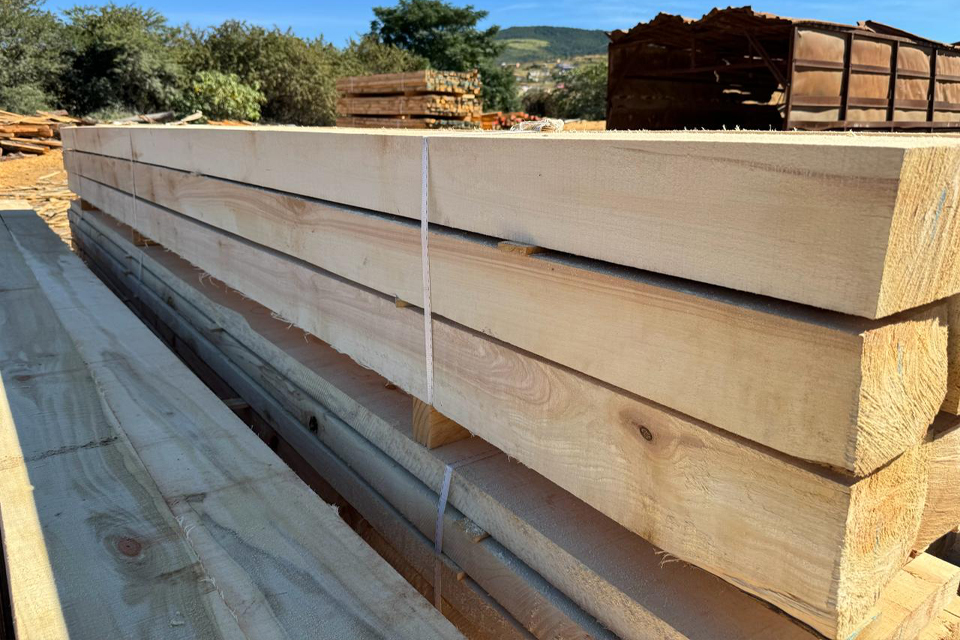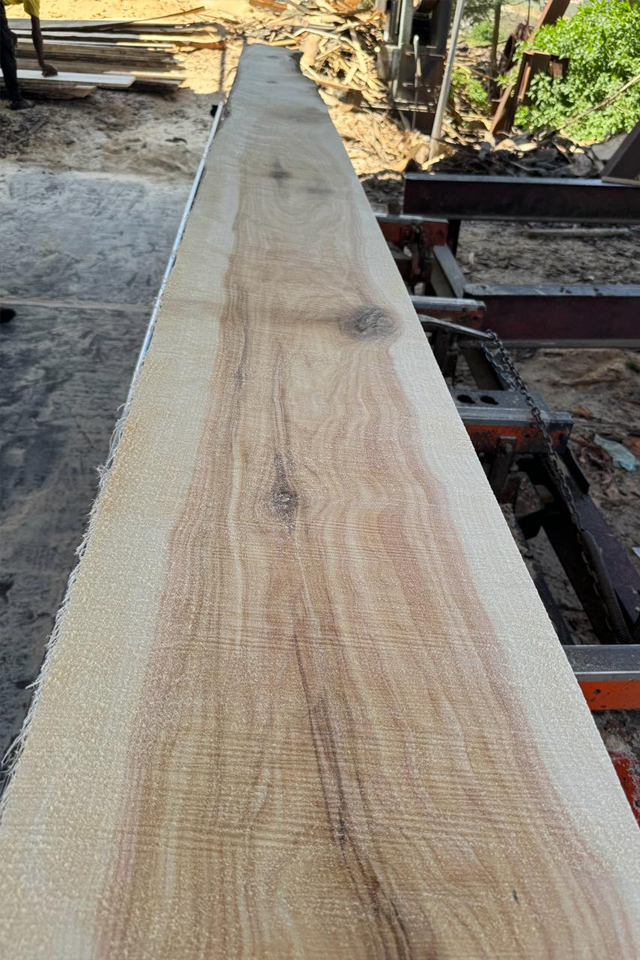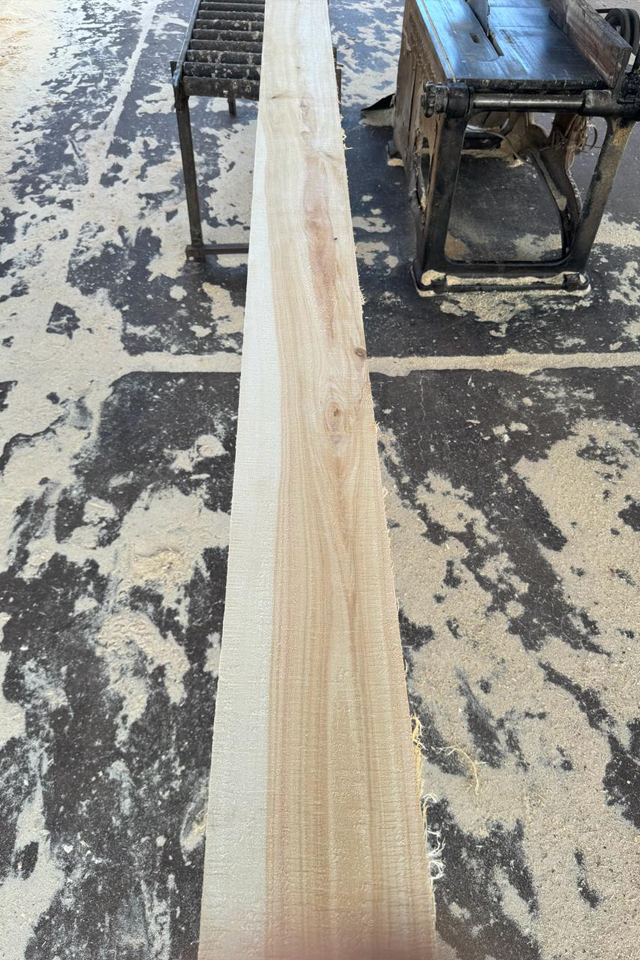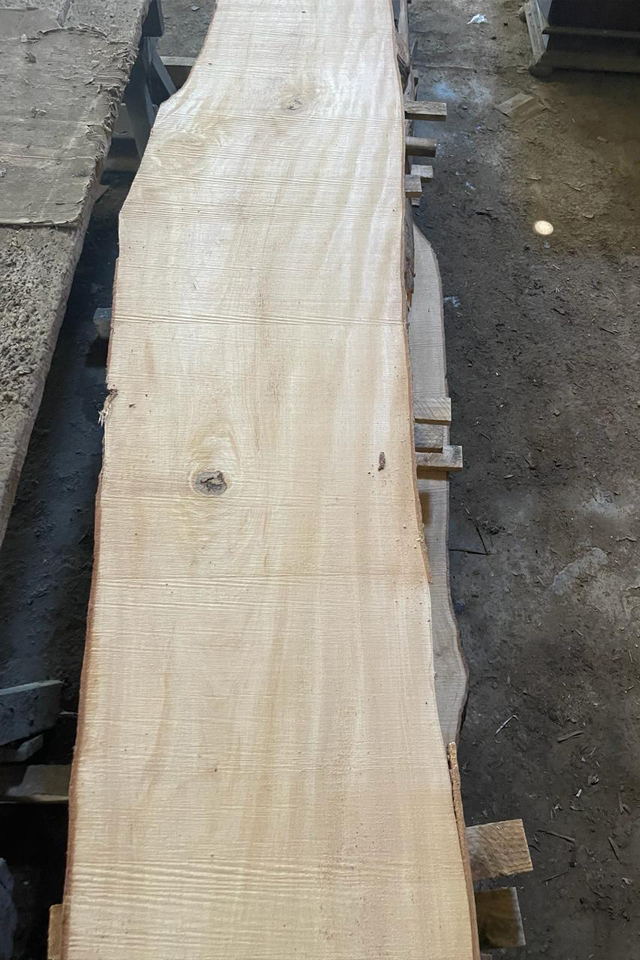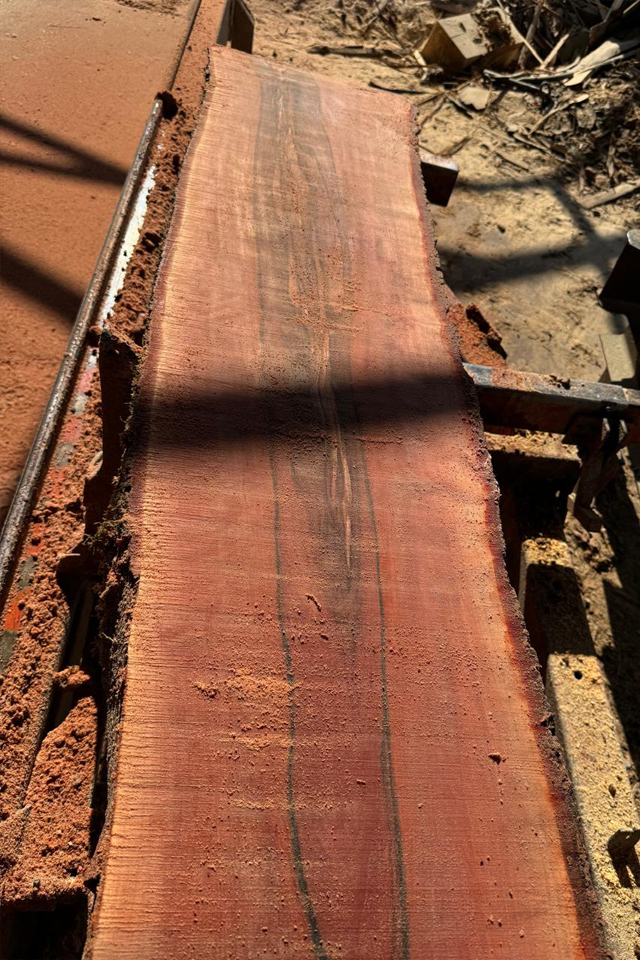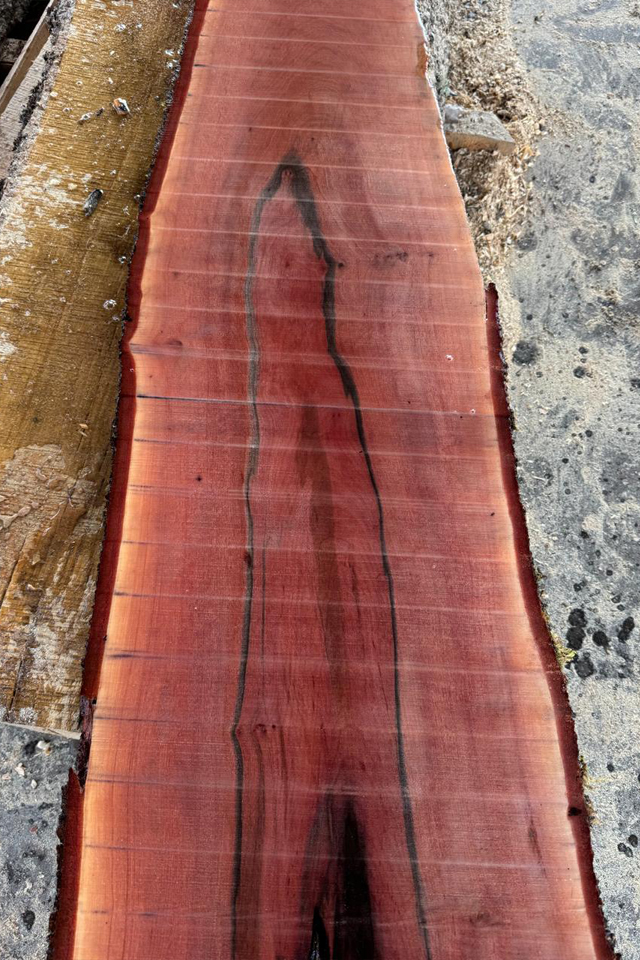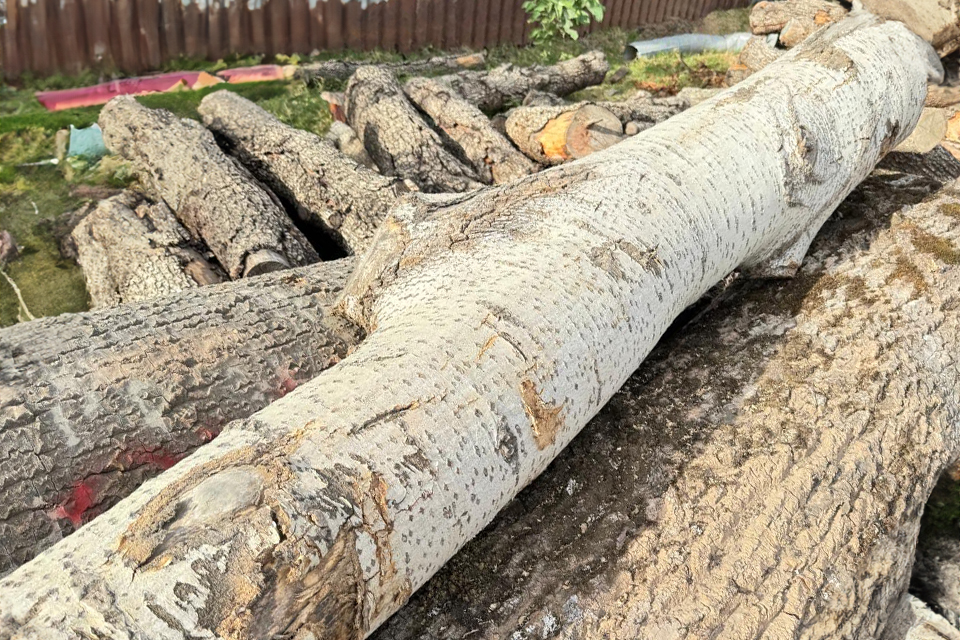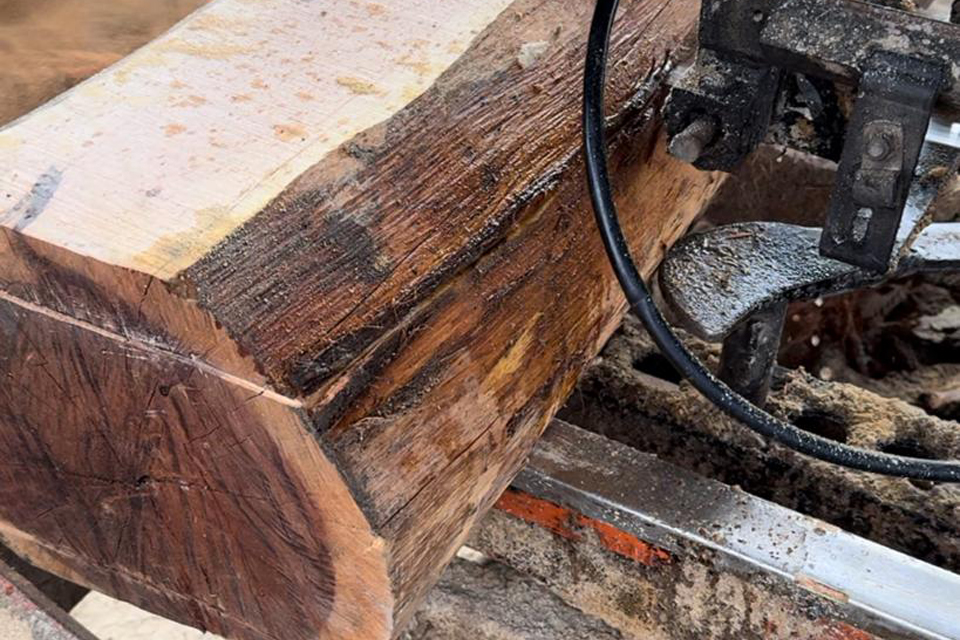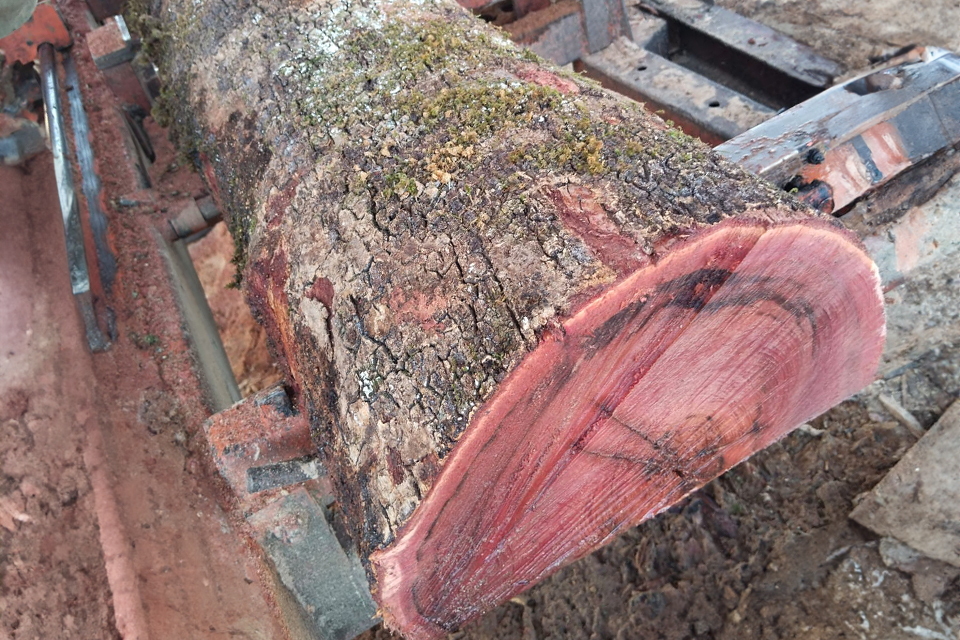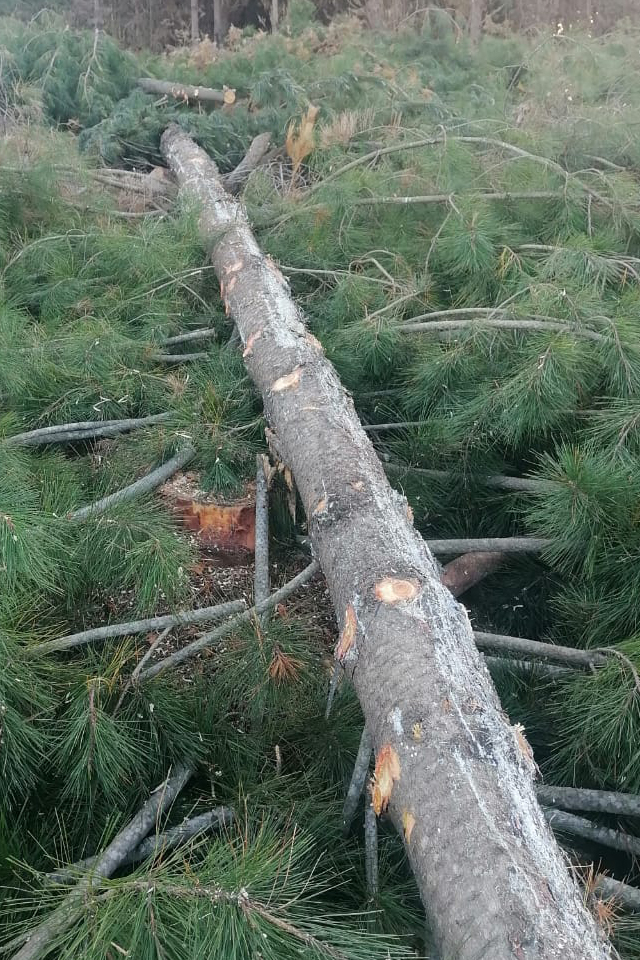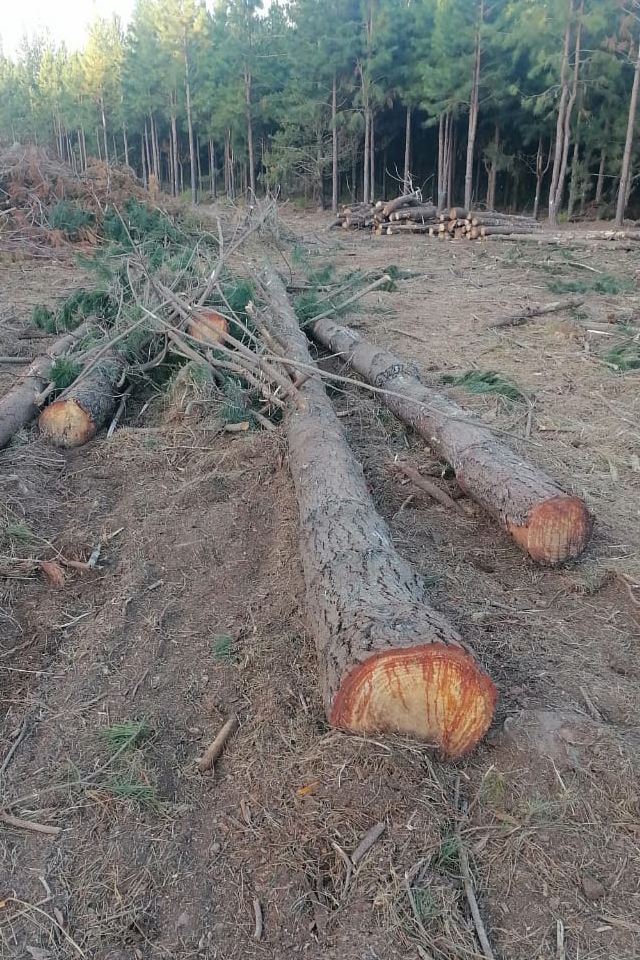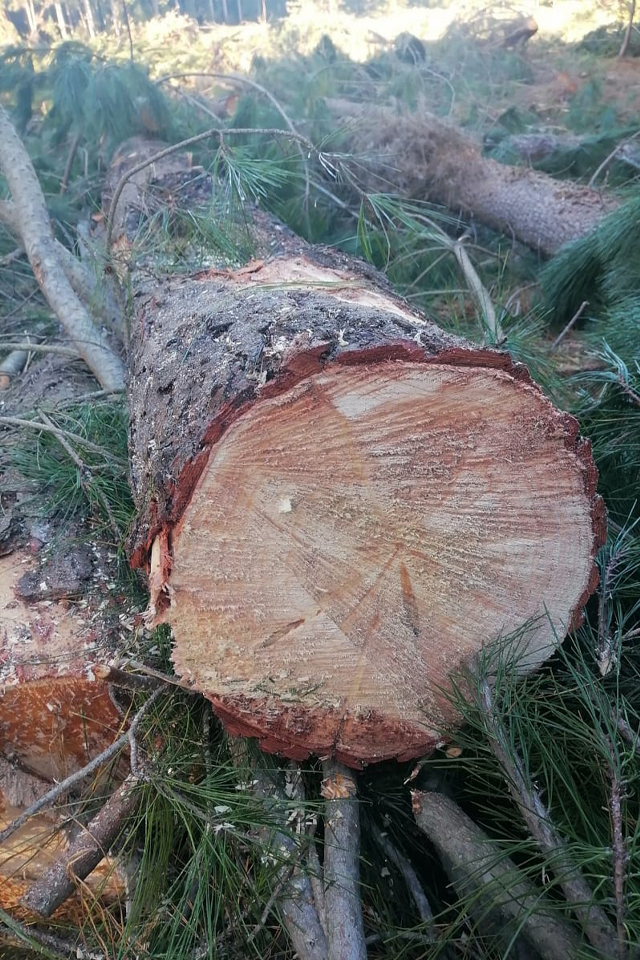S&T Range of Exotic Woods
Exported in the following formats
Logs
Harvested and Left in their natural shape. Used for structural purposes, milling, or as raw material for further processing.
Slabs
Slabs retain the natural edges. Used for tabletops, benches, or other furniture pieces that highlight the natural beauty of the wood.
Beams
Long, rectangular pieces of wood. Used for structural support. Beams are often used in framing, flooring, and roofing.
Planks
Flat, rectangular pieces of wood, thinner than beams, but similar in length. Used for flooring, decking, paneling, and other applications.
Pink Ivory
Berchemia Zeyheri
Pink Ivory ranges in color from a pale brownish pink, to a bright, almost neon pink, to a deep red. Typically the most valuable pieces are a vibrant pink.
Commonly seen with a curly or fiddleback grain pattern, further enhancing its visual impact.
Sapwood tends to be pale yellow to light brown, with a somewhat gradual demarcation from heartwood.
Credit: wood-database.com
Tamboti
Spirostachys Africana
Color ranges from a golden brown to a darker reddish brown, often with black streaks throughout.
Pale yellow sapwood sharply demarcated from heartwood. Occasionally figured pieces will be seen with subtle mottled grain patterns.
Credit: wood-database.com
Ironwood
Olea Capensis
Heartwood typically yellow to light reddish brown, with contrasting darker brown to black streaks and veins.
Yellowish sapwood is generally sharply demarcated from the heartwood, though it can be harder to tell apart if the heartwood lacks contrasting streaks.
Overall color tends to deepen with age. Olive is sometimes figured with curly or wavy grain, burl, or wild grain.
Credit: wood-database.com
Wild Olivewood
Olea Europea
Heartwood typically yellow to light reddish brown, with contrasting darker brown to black streaks and veins.
Yellowish sapwood is generally sharply demarcated from the heartwood, though it can be harder to tell apart if the heartwood lacks contrasting streaks.
Overall color tends to deepen with age. Olive is sometimes figured with curly or wavy grain, burl, or wild grain.
Credit: wood-database.com
Yellowwood
Podocarpus Latifolius
Yellow in color and quite similar to P. falcatus, the Outeniqua yellowwood, although not as dark or of the same quality.
The bark is greyish and smooth when young but shows the characteristic longitudinal fissures as it matures. The bark peels off in strips.
Credit: South African National Biodiversity Institute
Cape Blackwood
Acacia Melanoxylon
Color can be highly variable, but tends to be medium golden or reddish brown, similar to koa or mahogany.
There are usually contrasting bands of color in the growth rings, and it is not uncommon to see boards with ribbon-like streaks of color.
Boards figured with wavy and/or curly grain are also not uncommon.
Credit: wood-database.com
Poplar Wood
Populus nigra
Heartwood tends to be a light brown.
Sapwood is a pale yellow to nearly white, and isn’t clearly demarcated, tending to gradually blend into the heartwood.
This species also yields a unique burl that’s commonly sold as Mappa or Mapa.
Credit: wood-database.com
Assegai (Cape Lancewood)
Curtisia dentata
Bark is smooth and grey or cinnamon-coloured in young specimens but it becomes rough, dark brown to black and deeply square-fissured with age.
Timber is reddish, turning red-brown with age and somewhat resembles mahogany, and is extremely tough, strong and elastic with a fine grain.
Credit: South African National Biodiversity Institute
Mopani
Scientific Name
Lorem ipsum dolor sit amet, consectetur adipiscing elit, sed do eiusmod tempor incididunt ut labore et dolore magna aliqua.
Ut enim ad minim veniam, quis nostrud exercitation ullamco laboris nisi ut aliquip ex ea commodo consequat. Duis aute irure dolor in reprehenderit in voluptate velit esse cillum dolore eu fugiat nulla pariatur.
Excepteur sint occaecat cupidatat non proident, sunt in culpa qui officia deserunt mollit anim id est laborum.
Credit: wood-database.com
Red Pear
Scientific Name
Lorem ipsum dolor sit amet, consectetur adipiscing elit, sed do eiusmod tempor incididunt ut labore et dolore magna aliqua.
Ut enim ad minim veniam, quis nostrud exercitation ullamco laboris nisi ut aliquip ex ea commodo consequat. Duis aute irure dolor in reprehenderit in voluptate velit esse cillum dolore eu fugiat nulla pariatur.
Excepteur sint occaecat cupidatat non proident, sunt in culpa qui officia deserunt mollit anim id est laborum.
Credit: wood-database.com
Knobwood
Zanthoxylum Capense
Zanthoxylum capense is usually a small multi-branched tree about 5 m in height, but may reach 15 m under favourable conditions.
The bark on young branches is smooth with straight dark brown thorns, and light to dark grey on older branches and on stems, with straight spines on scattered cone-shaped knobs.
Credit: South African National Biodiversity Institute
Radiata Pine
Pinus radiata
Heartwood is light brown, wide sapwood is a paler yellowish white, and is distinct from the heartwood.
Radiata Pine lumber is plantation-grown, and generally has very wide growth rings and is knot-free.







